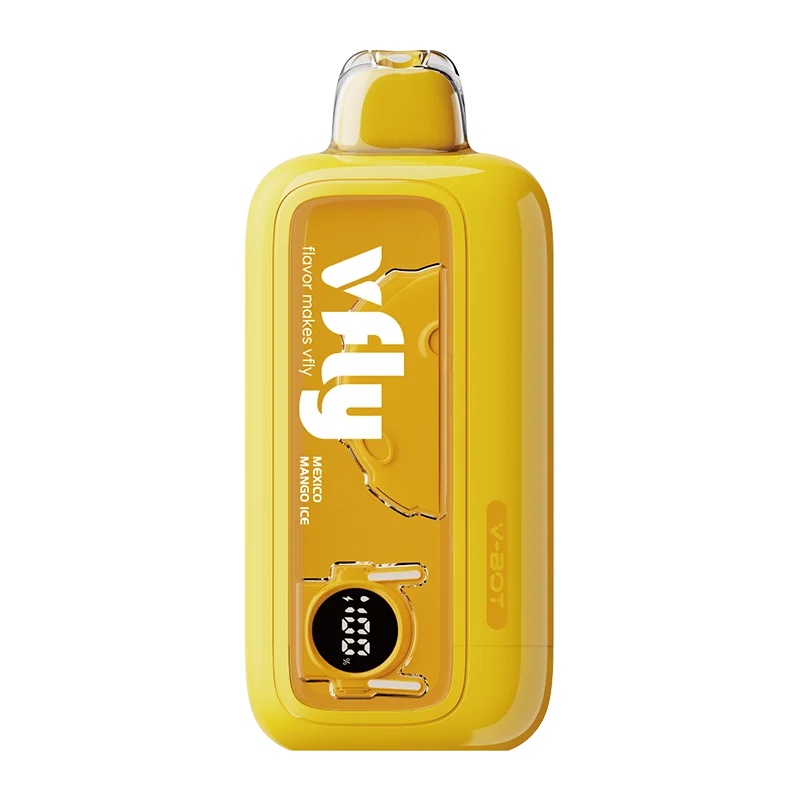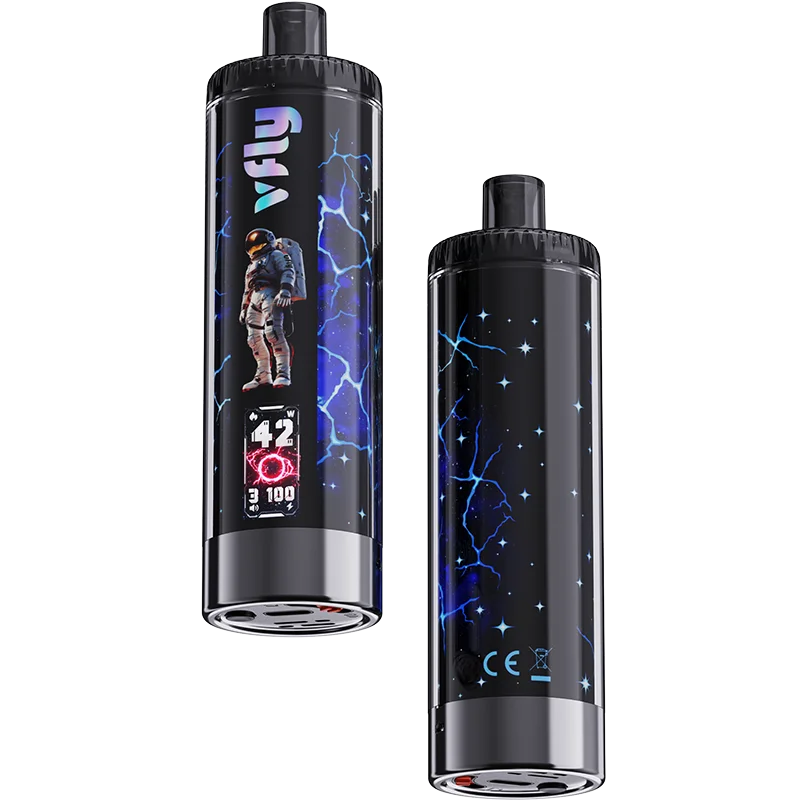Mastering Maintenance: How to Unclog a Disposable Vape
In the evolving landscape of vaping, discovering how to unclog a disposable vape is paramount. Particularly for aficionados of quality disposable vapes, the vexing issue of clogs can disrupt an uninterrupted journey of flavor and vapor production. Let's dive into the common causes of clogs in disposable vapes and maintenance tricks.

Why Do Disposable Vapes Get Clogged?
At the heart of the matter, the design of disposable vape pens, although engineered for convenience and portability, harbors some possibilities that can lead to clogging.
1. Condensation Buildup
It's the inevitable consequence of vapor cooling and condensing within the narrow pathways of the vape, particularly around the heating element and the vape mouthpiece. This condensed vapor can amalgamate over time, creating a sticky blockade that interrupts the blissful passage of vapor.
2. E-liquid Viscosity
High-quality disposable vapes often utilize e-liquids rich in vegetable glycerin due to their prowess in producing dense, satisfying clouds. However, this thicker e-liquid can be a double-edged sword. E-liquids with a high concentration of vegetable glycerin are viscous and can contribute to quicker clog formation. In colder conditions or if the vape is left unused for extended periods, the viscosity can increase, leading to a clogged pathway that even the most fervent inhalations cannot clear.
3. Frequent Usage
It's a paradox of our beloved vaping experience. High frequency can lead to rapid accumulation of residue, especially with e-liquids high in vegetable glycerin known for their thick consistency. Continuous vapor production also leads to repeated cycles of condensation. Without regular maintenance, this can culminate in a clogged disposable vape that hampers vapor flow and diminishes the quality of each puff.
4. Vape Quality
It's imperative to mention that not all disposables are created equal. Lower-quality disposables are more prone to issues, such as clogging, due to less efficient designs or inferior materials. Quality disposables are designed with these challenges, featuring mechanisms to minimize clogging and ensure a smoother vaping experience. A disposable vape designed with a detachable mouthpiece allows for easier access to the innards of the vape, providing a straightforward solution to manually remove any buildup without resorting to more invasive methods.
Why Does My Disposable Vape Keep Clogging?
Facing recurring clogs in disposable vapes, with a strategic approach and a keen eye for detail, unraveling the mystery behind these persistent issues can lead to smoother, more enjoyable vaping sessions.
5. Storage Condition
Where and how you store your disposable vape can significantly impact its propensity to clog. Exposure to extreme temperatures, whether too hot or too cold, can affect the viscosity of the e-liquid and condensation formation.
6. Inhalation Technique
Drawing too forcefully can cause condensation to build up more quickly in the vape device, leading to clogs. On the other hand, too gentle a draw might not be enough to keep the e-liquid moving smoothly through the system.

How to Unclog a Disposable Vape?
Embark on the journey to safely unclog a disposable vape — where precision meets gentle maneuvering, ensuring the harmony of the vaping device's functionality is maintained. Let's navigate through this process together.
Step 1: Assess the Situation
Before diving into the unclogging process, take a moment to assess the disposable vape. If it has a detachable mouthpiece, you're in luck, as this feature simplifies the entire procedure. Begin by gently removing the mouthpiece and applying no excessive force that might damage the vaping products.
Step 2: Apply Warm Water
Dip a paper towel in warm (not hot) water, wringing out the excess to avoid water entering the vape. Gently insert the moistened paper towel into the mouthpiece area and around any accessible parts of the vape, careful not to directly touch the heating element or any electronic components.
Step 3: Use Paper Clips for Precision
Sometimes, a more direct approach is needed to dislodge the clog. Unbend a paper clip to create a straight tool reaching the vape's airway. Gently insert the paper clip into the mouthpiece, using minimal force to poke through any visible clogs. This method requires a light touch to avoid damaging the coil or the internal structure of the vape.
Step 4: Dry and Reassemble
After dislodging the clog, use a dry paper towel to gently clean any residue from the mouthpiece and the top part of the vape. Ensure all components are dry before reassembling. If your disposable vape allows, gently reattach the mouthpiece, ensuring it's securely in place.
Step 5: Conduct a Functionality Check
Now, it's time to gently draw on the vape without activating the heating element (if possible, depending on the design of your disposable vape). This action helps ensure that the airway is clear. If you notice improved airflow, you've likely resolved the issue. If the draw is still restricted, repeat the steps, paying extra attention to any areas that might still be obstructed.

How to Prevent Disposable Vapes from Clogging
The adage "prevention is better than cure" couldn't be more apt in disposable vapes. While the convenience of these vaping devices lies in their grab-and-go nature, a modicum of maintenance can vastly extend their lifespan and enhance the vaping experience.
Tip 1: Regular Maintenance
Regularly wiping down the vape mouthpiece with a clean, dry, lint-free cloth removes residue and prevents build-up. For those rare finds where the disposable vape has a detachable component, ensuring it's clean and free from e-liquid residue can prevent clogging and leakage, thus maintaining a clear path for vapor production.
Tip 2: Proper Storage
The importance of properly storing your disposable vape cannot be overstated. Exposure to extreme temperatures can alter the viscosity of the e-liquid, making it more prone to clogging. A cool, dry place away from direct sunlight is ideal, preserving the integrity of the e-liquid and ensuring consistent vapor production. Additionally, keeping your vape upright minimizes the risk of e-liquid pooling around the device's airway, which is a common precursor to clogs.
Tip 3: Optimal Usage
Understanding and adhering to optimal usage practices can significantly mitigate the risk of clogs. Finding that balanced inhalation, neither hard nor gentle, ensures the e-liquid is vaporized efficiently, reducing residue build-up.
Moreover, be mindful of how often you're using the disposable vape. Alternating between vaping devices if you're a heavy user can give each a breather, reducing wear and tear.
Tip 4: Branded Quality
Pairing a quality vape brand with a regimen of maintenance, proper storage, and mindful usage forms a robust defense against the common headache of clogs.

Recognize When a Disposable Vape Cannot Be Unclogged
A common dilemma: recognize when a disposable vape is beyond repair, and it's time to bid it farewell. While the ethos of disposables leans towards convenience and not longevity, identifying the telltale signs that your vape cannot be unclogged is crucial for your vaping experience and safety.
1. Persistent Poor Performance
If the disposable vape consistently produces little to no vapor despite attempts at unclogging and troubleshooting, it may imply a compromised heating element, a severely clogged airway that cannot be cleared, or the depletion of e-liquid, all of which are beyond simple fixes.
2. Burnt or Unpleasant Tastes
A burnt or unpleasant taste that persists even after attempts to clear any clogs often indicates that the coil within the device has been damaged or the wicking material is burnt, both of which are irreversible conditions for disposables.
3. Leakage and Physical Damage
Visible signs of leakage or physical damage may imply internal issues that are not fixable, such as cracks or breaks, broken seals, or damage to the internal reservoir that holds the e-liquid, which suggests that the disposable vape's integrity has been compromised, no longer safe to use.
4. Battery Issues
Disposable vapes are designed with a battery life that roughly matches the amount of e-liquid they contain. If you've charged your device (for rechargeable disposables) and it still fails to turn on or dies quickly, it could indicate a depleted or damaged battery. Since the battery in a disposable vape cannot be replaced, this scenario marks the end of the device's usable life.
5. Exceeding the Puff Count
Each disposable vape comes with an estimated puff count, giving you an idea of how long the vape device is designed to last. If you’ve been using your vape for an extended period and notice a decline in performance, it might mean you’ve reached or exceeded this count.
It's essential to approach the maintenance and troubleshooting of disposable vapes with realistic expectations. Recognizing the signs that your disposable vape cannot be unclogged or repaired is crucial to maintaining a safe and enjoyable vaping experience. Pushing a vape device beyond its limits risks further performance issues as well as poses safety risks.

FAQs
Q1: Why is my disposable vape not pulling?
The culprit is often a clogged airway or a depleted battery.
Clogs can occur due to condensed vapor or e-liquid viscosity, especially in devices high in vegetable glycerin content. If your device is rechargeable and isn't pulling, ensure it's adequately charged. For non-rechargeable devices, it may indicate that the e-liquid is exhausted or the battery's lifespan has been reached.
Q2: Why does my disposable vape keep clogging?
Frequent clogging can be attributed to several factors, including the type of e-liquid, storage habits, and usage patterns.
E-liquids with a high vegetable glycerin content are thicker and more prone to causing clogs, especially in cooler temperatures. Additionally, improper storage, like leaving your vape in a hot car or cold room, can affect the e-liquid's viscosity, leading to clogs. Regular, heavy usage without proper maintenance can also contribute to this issue.
Q3: How do I know if my disposable vape is clogged?
A clogged disposable vape often manifests as difficulty drawing air through the device, resulting in weak or nonexistent vapor production. You might also hear a gurgling sound, indicating liquid has entered areas it shouldn't. If pulling on your vape feels unusually restricted compared to its normal operation, it's likely clogged.
Q4: What is the lifespan of a disposable vape?
The lifespan is generally measured by its puff count from around 600 to 6000 puffs, depending on the model and brand. This count is an approximation of how many draws you can take before the e-liquid is depleted or the battery dies, whichever comes first. Always refer to the manufacturer's specifications for the most accurate estimate.
In short, armed with this knowledge — from preventing and addressing disposable vape clogs to recognizing when it's time for a replacement — is primary to maintaining an enjoyable and hassle-free vaping experience. And I believe you're now better equipped to handle the intricacies of your disposable vape, ensuring each puff is as satisfying as intended. Happy vaping!



